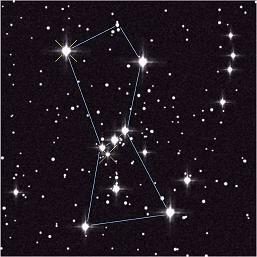 We understand by constellation that group of stars that have a specific shape and characteristics. Constellations are artificial forms created by humans to better understand a particular group of stars and although they are not marked in space, astronomy establishes lines and connections between them, forming different figures and symbols (which generally represent mythical characters).
We understand by constellation that group of stars that have a specific shape and characteristics. Constellations are artificial forms created by humans to better understand a particular group of stars and although they are not marked in space, astronomy establishes lines and connections between them, forming different figures and symbols (which generally represent mythical characters).
The constellation is, then, a shape that is symbolically established on the starry sky that we observe from our point on planet Earth. An important detail to keep in mind is that the stars or celestial bodies that are part of a constellation may not be close to each other even though they all appear the same at first glance. In general, the constellations have stars of different sizes, some being brighter and more noticeable than others.
The organization of the stars in constellations is a practice that existed since ancient times when civilizations such as the Mesopotamians, the Greeks and the Orientals carried out such a practice. The main objective of this action was to distinguish the stars in a more accessible and faster way, which was useful for both land and sea location. It goes without saying that, at the same time, these constellations received a transcendent magical character and hence they were related to animals or mythical characters.
The constellations can be divided into those that are to the north and those that are south of the Equator. Today, they are still being analyzed and taken into account, for example all the characters of the Zodiac being represented. The International Astronomical Union recognizes 88 of them. The best way to observe the constellations is from an open space, since urban centers (due to buildings and air pollution) do not allow to observe more than a couple of them.









